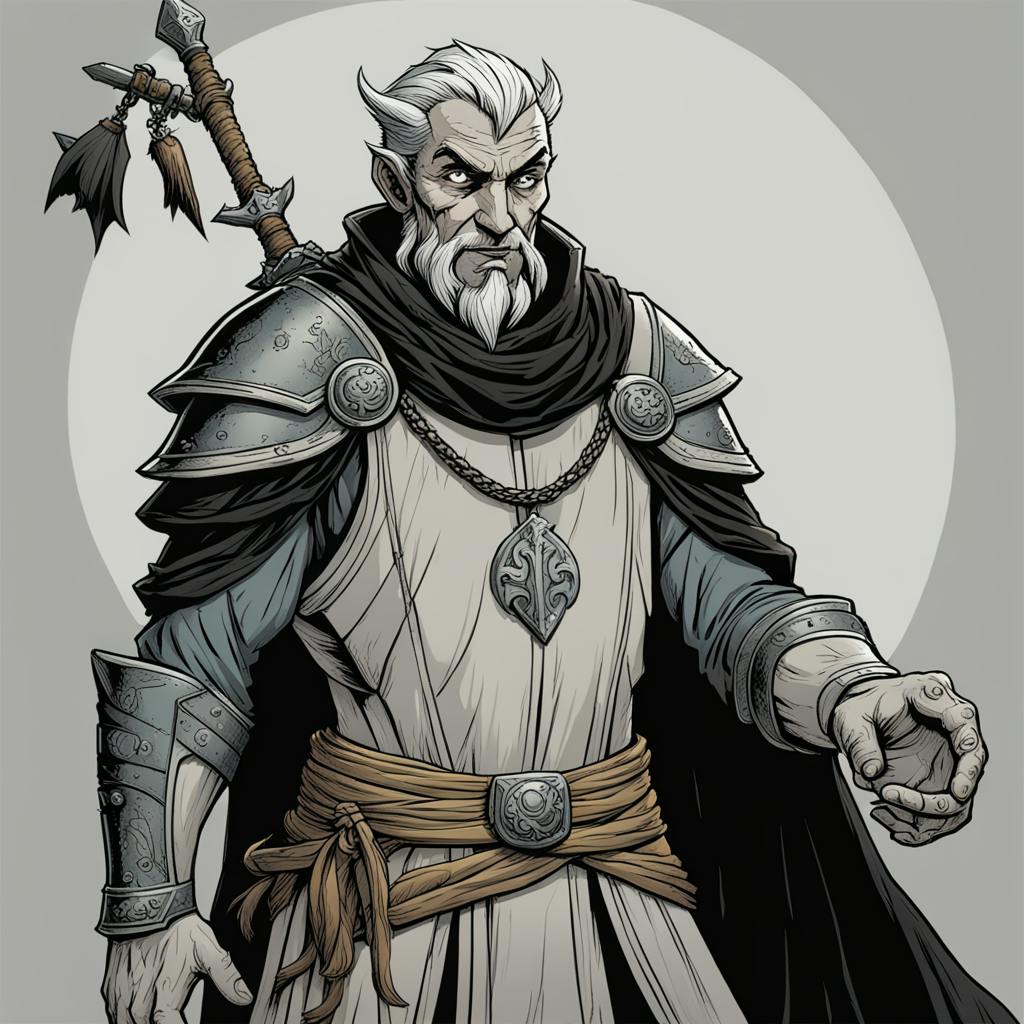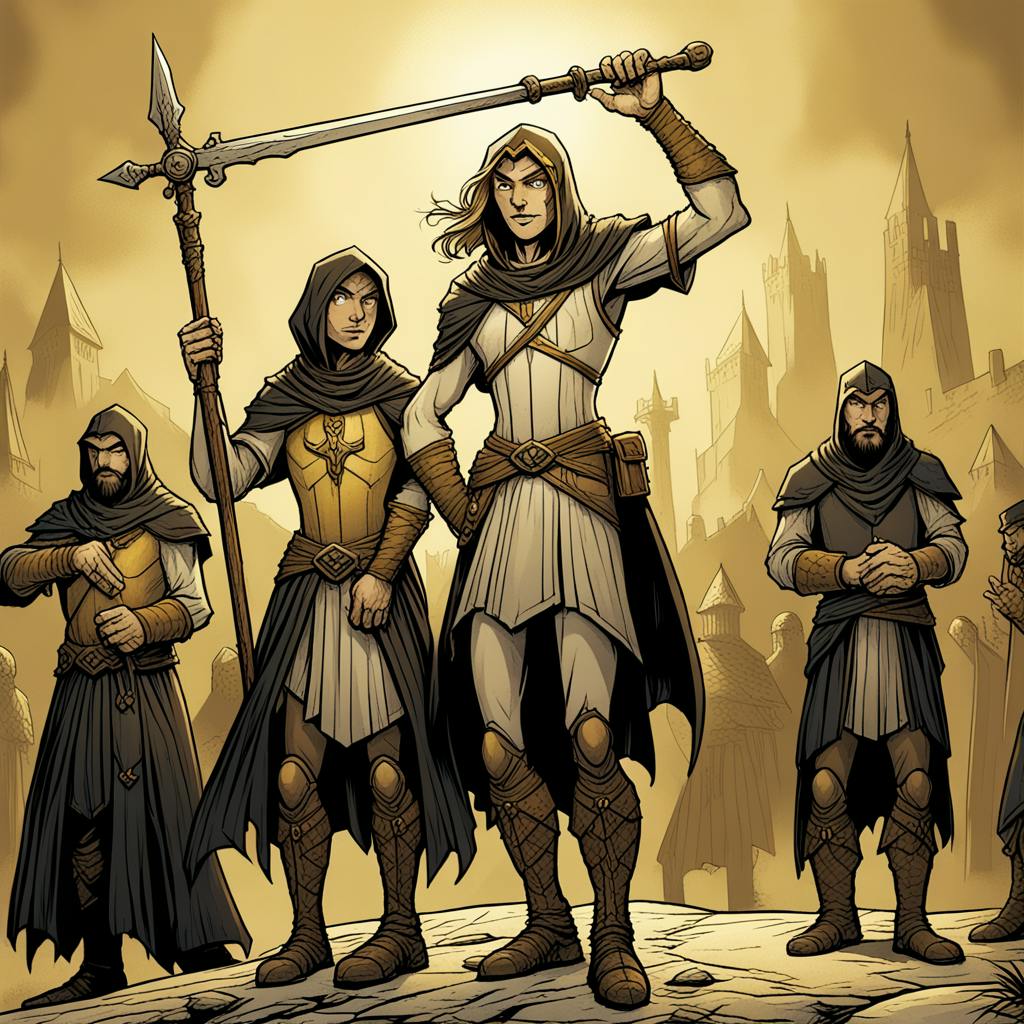In the vast tapestry of art and visual expression, iconography illustration stands out as a fascinating field that unveils the hidden messages behind images. This intricate art form involves the use of symbols and motifs to convey complex ideas and narratives. From religious manuscripts to modern graphic novels, iconography has been a tool for artists to communicate beyond the limitations of language. Understanding this visual metaphor not only enriches our appreciation of art but also reveals the cultural and historical contexts from which these images emerge.
Understanding Iconography Illustration
Clear Explanation of Iconography
Iconography illustration deals with the study and interpretation of symbolic imagery used across different artistic mediums. Whether in Byzantine mosaics or Renaissance paintings, artists have long employed iconographic elements to convey religious, political, or philosophical concepts. For instance, elements like the halo often denote holiness, while olive branches symbolize peace. Recognizing such iconography examples allows us to decode these messages and gain insight into the artist's intended narrative.
Description of Iconography Examples
A classic example is Leonardo da Vinci's "The Last Supper," where iconography illustration is pivotal. The image of Judas holding a bag of silver coins subtly references his betrayal. Similarly, iconography in hieroglyphics of Ancient Egypt—where a lotus flower signifies rebirth—demonstrates the timeless nature of symbolic communication. These examples underline the importance of iconography in illustrating underlying narratives and cultural values.
Significance of Iconography Illustration in Art History
Compelling Perspective on Historical Context
Iconography serves as a visual shorthand that provides a deeper understanding of the era in which the artwork was created. In medieval Christian art, for example, the depiction of the lamb often represented Christ, serving both as a theological tool and an educational one for communities. By analyzing various iconographic motifs—not just those tied to religion, but also in secular art—we gain a nuanced view of historical worldviews and artistic objectives.

AI made with Dean Jones
Insights from Art Historians and Experts:
Art historians explore iconography illustration to trace the evolution of artistic styles and cultural interchange. Works by scholars such as Erwin Panofsky highlight how iconography reflects the socio-political milieu of the time, providing credible insights into a bygone era. This analysis helps us understand the connection between visual culture and its broader historical implications.
Frequently Asked Questions About Iconography Illustration
What is the primary purpose of iconography illustration?
Iconography illustration is primarily used to convey deeper meanings and cultural narratives within art. It serves as a bridge between the visual and the symbolic, allowing artists to communicate complex ideas succinctly.
How can iconography be identified in artworks?
To identify iconography, one must be familiar with the cultural and historical context of the artwork. Studying common symbolic elements and their meanings can help viewers recognize and interpret iconographic illustrations.
Why is iconography important in contemporary art?
In contemporary art, iconography continues to play a crucial role as artists experiment with and reinvent traditional symbols to comment on modern society. This ongoing dialogue between past and present adds depth and relevance to contemporary works.
FAQ on Iconography Illustration
What exactly is iconography illustration and how is it used?
Iconography illustration is a specialized form of art that deals with the study, interpretation, and identification of symbols, themes, and subjects often used in visual representations. Central to art history and visual arts, iconography examines how these elements convey complex ideas, ideologies, and narratives, especially in cultural and religious contexts. It is the art of visual storytelling where symbols and motifs are employed deliberately to communicate deeper meanings beyond the literal and superficial.
Iconography illustrations are instrumental in religious texts, mythology, historical events, and even modern media and advertising. Artists use iconography to imbue their work with layers of meaning, often to connect with an audience familiar with the cultural or religious codes of the depicted symbols. Museums, educators, and historians use this tool to decipher artworks, understand cultural contexts, and engage audiences in a richer, more informed visual experience.
Can you explain some common symbols in iconography illustration and their meanings?
- The Dove: A symbol of peace, purity, and the Holy Spirit in Christian art. The dove carrying an olive branch is also associated with the biblical story of Noah, representing hope and the promise of new beginnings.
- The Skull: Often utilized to signify mortality and the transient nature of human life. Known as a memento mori, it serves as a reminder of the inevitability of death and the need to live a virtuous life.
- The Lion: A multifaceted symbol representing courage, strength, and royalty. In Christian art, the lion is often associated with Saint Mark or, in the context of the Gospel of Matthew, the embodiment of the divine.
- The Ouroboros: Usually depicted as a serpent or dragon eating its own tail, this ancient symbol represents the infinite cycle of life, death, and rebirth, often associated with Gnosticism, alchemy, and mysticism.
- The Lotus Flower: In Eastern traditions, the lotus signifies purity, enlightenment, rebirth, and spiritual growth, growing beautifully from muddy waters.
How does understanding iconography enhance the interpretation of an illustration?
Understanding iconography enhances the interpretation of an illustration by uncovering the nuanced meanings and messages that an artist or culture intends to communicate. When viewers recognize the symbols used in an artwork, they can discern additional layers of narrative that go beyond the immediate visual impact. For instance:
- Cultural Insight: A deeper understanding of cultural symbols reveals insights into the historical beliefs, values, and societal norms of a specific era or community.
- Narrative Depth: Iconography can illuminate the underlying story or myth that an artwork portrays, offering a more intricate appreciation of character motivations and thematic elements.
- Emotional Resonance: Recognizing symbols can evoke emotions, connect personally to the illustration, and provoke thought about existential themes such as life, death, morality, and spiritual beliefs.

AI made with Dean Jones
In what ways are hidden messages conveyed through iconography illustration?
Hidden messages in iconography illustration are often conveyed through the strategic use of symbols that require cultural, religious, or historical knowledge to decode. Here are some ways these messages are communicated:
- Symbolic Imagery: By using symbols that represent abstract ideas, such as justice being portrayed as a blindfolded woman (Lady Justice), artists can impart moral or philosophical messages.
- Color Symbolism: Colors are loaded with meanings; for instance, black might symbolize mourning or evil, whereas white often stands for purity or innocence. Application of certain colors can subtly alter the perceived message.
- Composition and Juxtaposition: Placement of symbols in a particular arrangement can guide interpretation. For example, a skull beside a blooming flower can suggest a juxtaposition of life and death.
- Contextual Elements: Often, settings, attire, and objects in an artwork carry hidden meanings. A lone candle in a dark room might signify hope or divine presence.
- Allegory and Metaphor: Artists use allegorical figures to embody complex themes or ideals, challenging the viewer to engage with the illustration on a metaphorical level.
By studying iconography, one can unlock these hidden messages, leading to a more comprehensive understanding of the work's intended meaning and the context in which it was created.
Conclusion
In summary, iconography illustration is a vital tool in the vocabulary of art that transcends time and language. It embodies the intricate relationships between symbolism and narrative across various cultures and eras. From classic religious iconography to modern interpretations, understanding these symbolic languages enhances our appreciation of art's multifaceted nature. As we continue to explore and decode the rich tapestry of iconography, we unveil the hidden messages and cultural dialogues that shape the world of visual arts.

